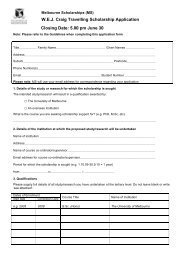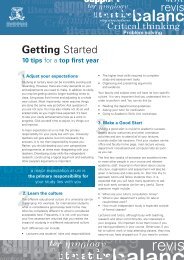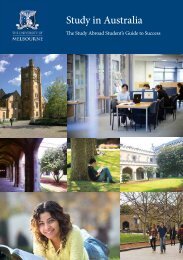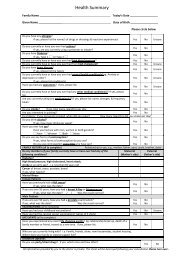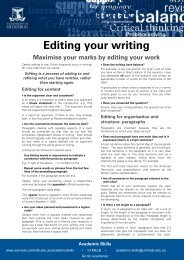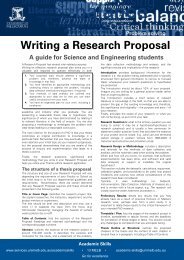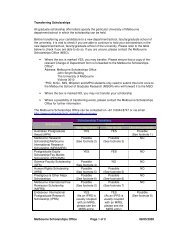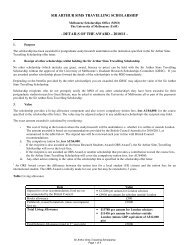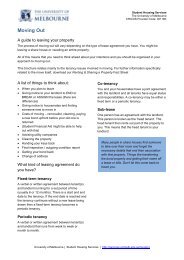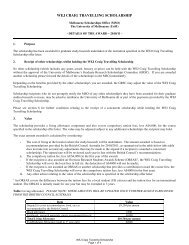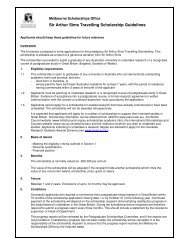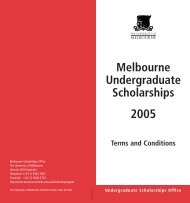a growing experience - Student Services - University of Melbourne
a growing experience - Student Services - University of Melbourne
a growing experience - Student Services - University of Melbourne
Create successful ePaper yourself
Turn your PDF publications into a flip-book with our unique Google optimized e-Paper software.
HEALTH AND WELL-BEING OF INTERNATIONAL STUDENTSThe relative numbers <strong>of</strong> students classified as belonging to each <strong>of</strong> the clusters is <strong>of</strong>interest. Cluster 1, the positive, connected mode <strong>of</strong> adaptation, contains the majority<strong>of</strong> students: 576 or 58.8 per cent <strong>of</strong> students are deemed to be adapting to universitylife in <strong>Melbourne</strong> in this way. There is, nevertheless, a strong presence <strong>of</strong> theunconnected, stressed style among the respondents. Some 337 students or 34.4 percent <strong>of</strong> the respondents have been classified as belonging to cluster 2. Fortunately,few students have been placed in cluster 3; only 66 students (or 6.7 per cent <strong>of</strong> thesample) have been categorised as showing a distressed and risk-taking mode <strong>of</strong>adaptation to university life in <strong>Melbourne</strong>.A representation <strong>of</strong> the three clusters, based on the 21 variables used in the analysis,can be seen in Figure 2.It is <strong>of</strong> interest to see whether there is an association between students’ style <strong>of</strong>adaptation and a range <strong>of</strong> demographic variables such as age, gender, faculty and soon. Most demographic variables do not show a significant association with the style<strong>of</strong> adaptation; this includes age, marital status, faculty, number <strong>of</strong> years enrolled,completion <strong>of</strong> Foundation Studies, number <strong>of</strong> years <strong>of</strong> secondary schooling inAustralia, presence <strong>of</strong> one’s child in Australia, and speaking some English when<strong>growing</strong> up.Mean Z Score3.002.001.000.00-1.00ConnectednessCultural StressAbuse & DistressDepressionAnxietyStressPerc. Drug UsePerc.Alcohol UsePerc Gamb/SmokeFinances OKWorry financeSocial balanceStudy balanceToo much uniworkPerc. academicprogressCondom useNo. sexualpartnersGambling hereSelf-harm totalExclusionGeneral healthPositive and Connected Unconnected and Stressed Distressed and Risk-takingClusterFigure 2Means <strong>of</strong> variables used to define mode <strong>of</strong> adaptation <strong>of</strong> three clusters:1. Positive and connected; 2. Unconnected and stressed 3. Distressedand risk-taking.Russell, Rosenthal & Thomson, 2006 109



